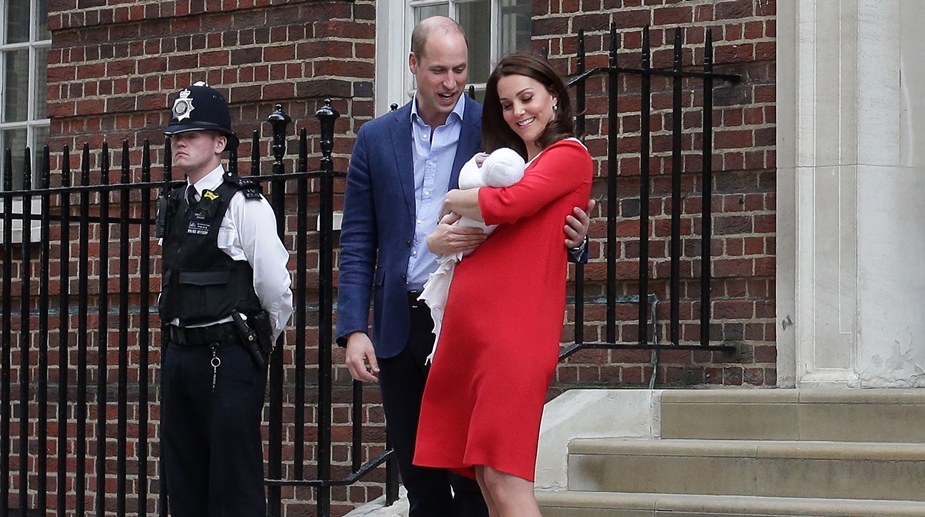Princess Kate Middleton reveals she has cancer, requests privacy
Princess of Wales Kate Middleton has revealed that she has been diagnosed with cancer and is undergoing chemotherapy treatment.
Dr Aruna Kalra lists factors that can play a big role in ensuring a smooth pregnancy and delivery

Prince William and Kate Middleton show their newborn son, their third child, Prince Louis of Cambridge, to the media at St Mary's Hospital in London on April 23, 2018. (Photo: AFP)
This is the third time Duchess of Cambridge Kate Middleton has become a mother. And once again, she has women around the world asking one curious question: how does she do that? In less than 12 hours of delivery, Duchess Kate was posing for the cameras, smiling as ever and looking gorgeous in her red dress and high heels.
So, how does she really do it?
We ask Dr Aruna Kalra, Director and Senior Gynaecologist Surgeon at CK Birla Hospital, if it’s possible for other women.
Advertisement
“Pregnancy is an important event and a very special time in a woman’s life .Good health, good diet, no birth complications and supportive friends, aides and family is all you need,” she says.
Dr Kalra lists some factors that could have played a role in Kate’s super smooth pregnancy and delivery.
Regular Health Checkups
According to The Guardian, research shows British mums are sent home from the hospital after childbirth more quickly than in any other developed country. Scheduling a health care visit before becoming pregnant is a good idea. Along with getting advice about diet and exercise from your healthcare professional, you can discuss whether you have any factors that increase the risk of having a child with a birth defect. If you have a medical condition, you also can discuss any special care that you may need before or during pregnancy.
Short labour
The average amount of time for labour is 16 hours; the second average is about eight hours, and the third average is four to eight hours. Duchess Kate seems to fall in the latter category.
The first birth is usually the hardest on the body and after that the body has “good recall” to adjust and stretch to new pregnancies and deliveries.
Nutrients during pregnancy
Nutrition is not only important for the unborn baby but also for the mother’s current and future health status. Eating well during pregnancy and lactation requires a few adjustments to general good health dietary guidelines. A woman’s need for calories, proteins, vitamins, minerals and water increases (during and after pregnancy). Age, weight, activity level and metabolism influence how much a woman will need to eat for optimum weight gain, health, and fetal development or breast milk production.
Choline is known to be critical during fetal development as it influences brain and spinal cord structure and keeps life long memory functional. Foods rich in choline are liver, eggs, chicken, almonds, cashews, roasted soybeans, cauliflower etc.
DHA (docosahexaenoic acid) is most important fatty acid in the brain and eyes, and is important for healthy visual and mental development of the infant in utero. Sources of DHA are oily fishes like salmon etc and their products and vegetable oils, flaxseeds, canola oils, and foods rich in iron, calcium, proteins and energy.
Precautions during pregnancy to prevent acidity and reflux
Exercises
In uncomplicated pregnancies, women with or without previously sedentary lifestyle should be encouraged to participate in aerobic and strength conditioning exercises.
A few important exercises are
Advertisement